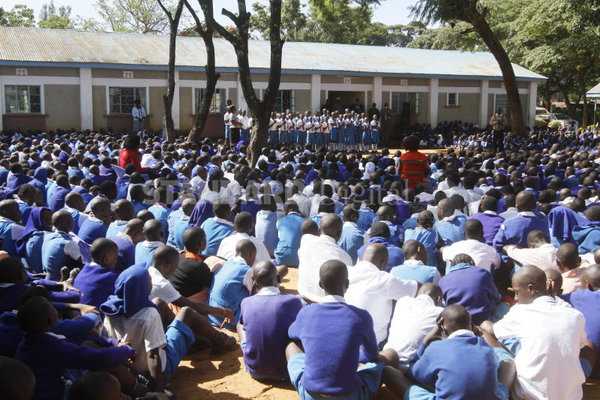
Since the government rolled out the free primary education programme in 2003, there has been an increase in the number of pupils joining school. However, little has been done to improve infrastructure.
Saturday Standard visited Kenya’s most populated primary school to experience what it takes to learn or teach here.
Chaotic classes
On a chilly Friday morning, the voice of a girl reading from a battered chalk board fills the air at Bungoma District Education Board (DEB) Primary School. Her shrill voice permeates the thin walls separating the junior block classes, and is followed by high pitched chorused repetition from her class mates.
In the adjacent class, a teacher raises her voice, trying to dissolve the sounds of enthusiastic and energetic learners next door. The resultant sound is choreographed noise, rising into a deafening crescendo and occasionally faltering before peaking again.
READ MORE
Russian cultural workshop seeks to tackle education challenges in rural areas
Bungoma village excited over refurbished school infrastructure
Kepsha Chair appointed to KICD governing council
New KEPSHA chairman Fuad Ali vows to advocate for CBC reforms
In a far distance, the bellowing voice of a Swahili teacher reading a script is heard from the block hosting class eight pupils. Across the field, a team engaged in physical activity sings and dances with abandon. All together, they form some sort of disorganised orchestra of teachers and pupils struggling to learn in constricted space that gets smaller with every pupil admitted at the school.
The teachers say they are used to the chaos. The pupil population at Bungoma DEB currently stands at 3,685, making it the most populated primary school in Kenya.
Bungoma County Director of Education Jacob Onyiengo said implementation of Free Primary Education has stretched the infrastructure to maximum, forcing the schoolto use every space available, often leading to overcrowding and overworked teachers.
“We have had talks with stakeholders to find ways to improve the school, but so far, they are studying in dire conditions,” he says.
Assembly time
At exactly 10am, two hours after the pupils started lessons, head teacher Tobias Khisa steps out of his office. He has been in a meeting since 7am and he informs us he has something urgent to tell the pupils.
His shoes make a sucking noise against the muddy ground as he races towards the bell. He hits it thrice. Teachers step out and stand at the doorway. They guide the stream of pupils, class by class, to the assembly ground. The process systematic: one after another, they scurry to the assembly ground, with the youngest leading the group, under strict guidance of their teachers.
“Don’t run! Let us have some order. Remind your friend that we are a school of discipline and order…,” the teachers say, reducing the building noise into a soft murmur.
In no time, the assembly is a sea of people, stretching on till it becomes almost impossible to see them all.
“It is like a political rally. If you let all of them out at the same time, they could die if there is a stampede. So we have to guide them,” says Khisa.
A group of pupils get into the staff room and come out with gigantic speakers. They place them at a corner and hand the head teacher a microphone.
“We have to use a public address system. Otherwise, we would rapture our voice chords shouting,” Mr Khisa says. ?
He informs the pupils of a change in toilet schedule. The recent rains sunk 15 of the school’s toilets, leaving them with only 10 to share.
Inside the classroom
The lines to the toilets are winding, and the assembly is to tell the pupils that a make shift urinal has been arranged for boys, but it is temporary.
“Let us maintain cleanliness. If toilets are few and we are not clean, the whole school can get sick,” Khisa tells the attentive pupils before dismissing the assembly.
At midday, the sun has steadily warmed the iron sheet roofs, turning classrooms into furnaces.
morengo@standardmedia.co.ke

